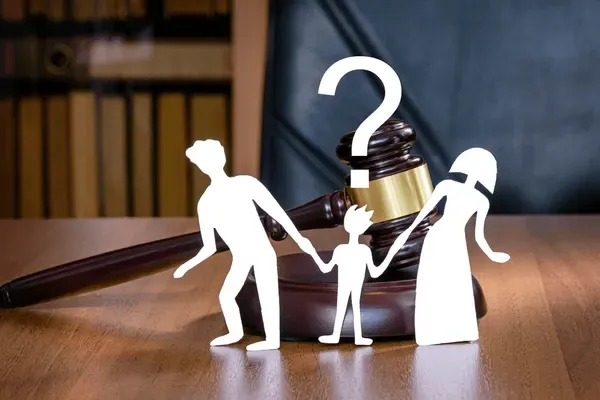The Definitive Guide to Gray Divorce
The Issues Surrounding Divorcing After 50
What is “Gray Divorce”?
“Gray Divorce” is a phrase that refers to a divorce
involving people over 50 years old and are generally part of the Baby Boomer generation. In this helpful guide, I will discuss and unravel some of the important issues surrounding Gray Divorce. While there has been a reduction in overall divorce rates in the past 20 years, the divorce rate of people aged over 50 has doubled in this time. The increase in older divorces was given the unfortunate term of Gray Divorce.
Origins of the Gray Divorce
Around a quarter of all the divorces in 2010 involved couples that were aged 50 or older, which is double the divorce rate for this age group from 1990. These statistics have led to some people coning the term “Gray Divorce”, and also created a need for middle-aged and older people to gain a better understanding of the unique issues associated with divorcing at an older age.
Understanding Gray Divorce
It can be complicated to end a marriage later in life. Most couples won’t be prepared for the practical considerations and unique legal issues there are for older people, and that can be daunting, to say the least. The financial implications, in particular, are far-reaching and may significantly impact the rest of the lives of both spouses.
The most concerning issues of Gray Divorce are insurance, healthcare, retirement
savings, business interests, estate planning, social security, and taxes. This guide has been put together to offer some insight into those issues for people who are older and are considering or dealing with, a divorce.
Why do People Get Divorced Later in Life?
Each divorce has unique circumstances, but there are several trends that contribute to the Gray Divorce phenomenon.
- Divorce
Repeating Itself
Second, third, or even fourth marriages are not uncommon when it comes to baby boomers, and these marriages tend to be less successful. The divorce rate for people over fifty who have been married more than once is over twice as high as those who were married just the once. Remarried people over 64 years old have been shown to have a divorce rate of nearly four times that of people who have only been married once.
- Postponed Divorces
Many couples choose to stay together for the sake of their children. Couples may want to get a divorce but will wait until their children have grown up. They aren’t satisfied with the marriage, but they wait until the children have been raised to do something about it.
- Empty Nesters
Some other married couples find that their marriage isn’t strong enough to survive once their children grow up and leave the house.
- Retirement
When someone retires, it causes a dramatic lifestyle shift that can negatively affect a marriage. Some retired couples discover that spending more time together doesn’t bring them more happiness, or that their personal interests in retirement don’t match up and they are just no longer compatible.
- Financial Reasons
Many people will wait until they have financial stability to get a divorce. This is most common with women, but the times may be changing. Women aged between 40 and 69 are the ones initiating a divorce 66% of the time. This could be a sign that women in this age range are more financially independent than before, or just feel it.
- General Dissatisfaction
The general attitudes to divorce are becoming more relaxed than ever. With more people getting divorced, holding off retirement, and living longer, it may simply be that people aged over 50 that are dissatisfied with their marriage find it easier than before to go through with a divorce.
Looking For a Different Alternative?
Explore Other OptionsThe Issues Surrounding Divorcing After 50
This guide will look at some of the unique considerations for divorcing later in life. This includes several important issues, including:
• Retirement
• Income and Spousal Support
• Social Security
• Insurance
• Division of Assets
• Competency
• Adult Children
• Long-Term Considerations
• Long-Term Care
• Estate planning
The following is a quick reference guide to these unique issues surrounding Gray Divorce that need to be considered.
1 Retirement
Divorcing close to retirement can leave each spouse having a less comfortable retirement once everything has been settled. Perhaps you need to access retirement funds early. You may have to make decisions about increasing retirement savings, delaying retirement, or having a different lifestyle than expected after retiring.
2 Income and Spousal Support
When marriages end, especially long-term marriages, there will be issues surrounding income. How are spouses going to maintain income streams? Will they be expected to join the workforce, paying/receiving spousal support as alimony, or splitting a fixed income for retirees?
3 Social Security
There are some cases where spouses are entitled to benefits based on the social security of their spouse, depending on the income of each spouse and how long the marriage lasted for. Getting remarried stops spousal social security benefits.
4 Insurance
When it comes to Gray Divorce, the age of the people involved will cause issues around health and life insurance that must be addressed. That includes the ability of individuals to afford their health insurance. It may be possible to remain on a spouse’s health insurance plan by going through a legal separation rather than a divorce.
5 Division of Assets
A divorce later in life will generally involve more significant assets. Dividing property, both community, and separate property, is subject to a number of considerations that are unique to the issue of Gray Divorce. This includes how close the individuals are to retirement, how long they were married, and other factors.
6 Competency
The older people get, the greater the chance that competency is something that will affect their ability to represent their individual best interests. In these situations, an attorney or court may want to have a competency period and put together measurements to protect the rights of people that are found to be not competent.
7 Long-Term Considerations
The issues surrounding aging, such as dealing with long-term care and preparing for last wishes, should be considered for a Gray Divorce. It’s recommended you keep your estate plan updated before, during, and after the divorce. It’s also recommended that you plan the costs and provisions of long-term medical care if necessary.
I hope this article has been been helpful in clarifying some of the issues related to Gray Divorce. Please let me know what you think or if you have any questions.















